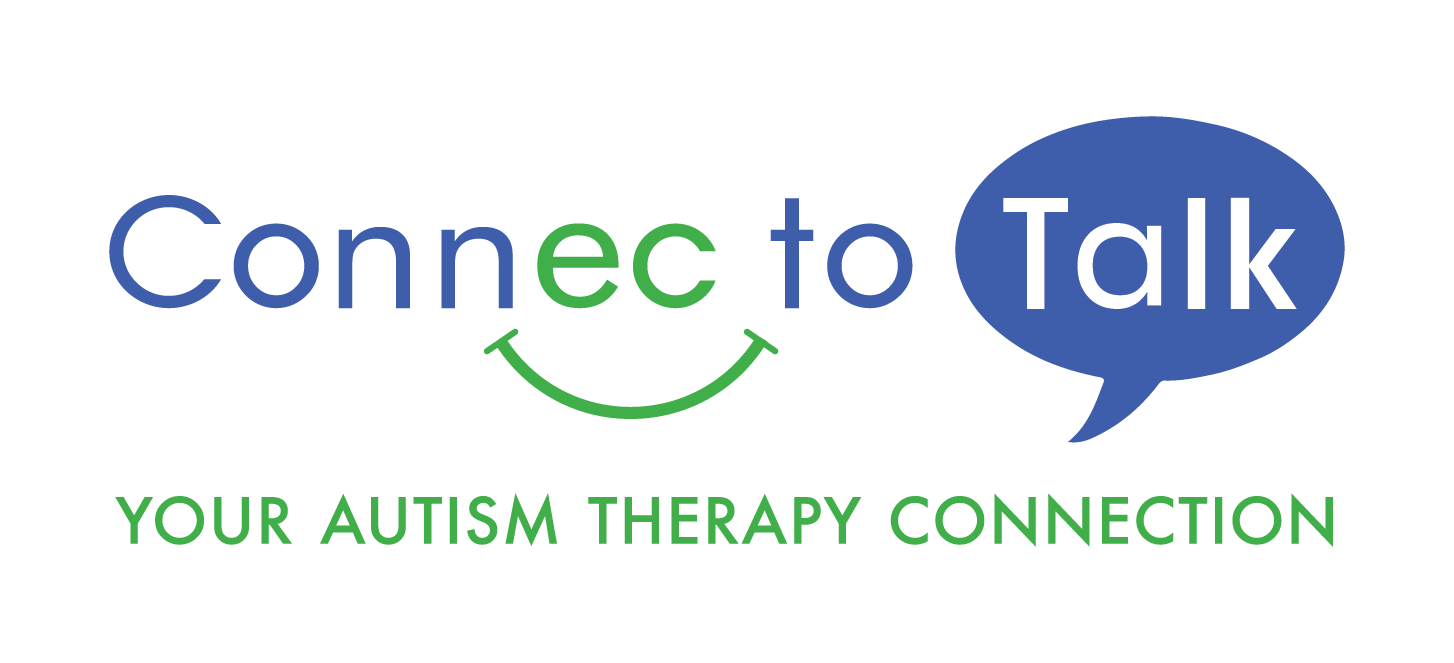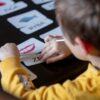![The Teacher and The Child Information collected by Alexandria Sauls and Ashleigh O’Dell Children with autism may face challenges when transitioning back to school as well as when they begin school for the first time. Teachers and families can work together before and during the school year to develop an effective plan for a smooth classroom transition! Potential Challenges for […]](https://connec-to-talk.com/wp-content/uploads/2024/01/CTT-ABA-Therapy_1.jpeg)
Information collected by Alexandria Sauls and Ashleigh O’Dell
Children with autism may face challenges when transitioning back to school as well as when they begin school for the first time. Teachers and families can work together before and during the school year to develop an effective plan for a smooth classroom transition!
Potential Challenges for Students with Autism in School
Young students with autism may face cognitive and processing delays, which could result in difficulty demonstrating written and verbal language.
Sensory and perception issues may arise as well; the student may struggle with depth perception, poor balance, and sensitivity to certain sounds.
In the classroom, motor skill challenges may present themselves when using writing utensils to complete tests and homework
As the day progresses, some students may have difficulty with transitions and may show rigidity in changing locations or activities. These can be:
Horizontal transitions: smaller transitions already within the school day (activity-to-activity, room-to-room), or
Vertical transitions: larger transitions (moving from preschool to kindergarten)
Common Behavioral Interventions
The following interventions are commonly used in Applied Behavior Analysis (ABA) and can potentially help students with special needs adjust to a new classroom, routines, and people!
Self-monitoring: Students are taught to track their own behaviors. For example, a teacher may instruct a student to count the number of math problems they complete during independent work time.
Differential reinforcement: Rewarding a specific response in order to increase that response in the future. An example could be rewarding a child by allowing them to share when they raise their hand and choosing a peer to share when the child calls out.
Token economy systems: Tokens (or other items) are provided when the student displays desired behavior. When the student reaches a specified number of tokens, they can exchange them for rewards. For example, a child can earn five tokens for staying seated during a work period before accessing a toy or break!
Tips for Parents for a Smooth Transition
Parents can review and prepare any important information regarding their child’s behavioral history and diagnosis to share with their teachers.
- Preferences & reinforcers
- Dislikes and nonpreferred activities
- Areas/times of difficulty
- Behaviors
- Strategies to calm child down
- Private diagnostic reports
Tips for Parents – School Supports
The following is a list of resources that the school can implement to support students who has been identified as needing additional assistance through evaluations and assessments completed by school professionals.
Behavioral Support: A behavior plan, is used to outline all of the interventions that will be used to increase your child’s appropriate behavior and decrease their challenging behavior they are displaying at school. Having this plan in place is beneficial so that all staff are knowledgeable on how to assist your child when they become overwhelmed in class and need additional support.
Behavioral, Academic, Social, Communication, and Life Skills Support: When it is recognized that a student is falling behind in any area of development and has received psychological testing to show said delays, an Individualized Education Plan (IEP) will be developed. According to the United States Department of Education, an IEP must include specific information about the child and the educational program designed to meet his or her unique needs. This information can include the child’s current level of progress, proposed goals, any accommodations required, and specific transitional needs. An IEP also includes when services and modifications go into affect, and details on how staff will measure the student’s goals.
IEPs are developed by the student’s parents and key school staff. An IEP meeting must be held at least 30 days after it is determined that the student has a disability and is in need of special education-related services. Being familiar with your child’s plan and working together with school staff can help ensure your child’s continued success!
Tips for Parents – 504 Education Plan
A 504 Education Plan ensures that students with disabilities receive the accommodations and services they need while in school. Students with disabilities such as autism, Attention Deficit Hyperactivity Disorder (ADHD), vision/hearing impairment, or mental/physical health conditions can be eligible for a 504.
504’s are created for a student after a team consisting of the student’s parents, health provider and school staff review school and medical records to assess eligibility. After eligibility is determined, the team works to create the appropriate modifications for the student (e.g. extra time on tests, physical or occupational therapies, speech-to-text devices, etc).
Parents can aid in their child’s transition by familiarizing themselves with these plans and setting up meetings with their child’s school and staff highlighting necessary information. The more you know, the better you can advocate for your child at school and support them at home!
Tips for Teachers for a Smooth Transition
Teachers have a great opportunity to create an accommodating and welcoming environment for their student(s) with autism. If the child is in a general education classroom, the teacher can take opportunities to support peer relationships and teach empathy towards others for all students in their classroom. This way, all of the students can develop an understanding and make connections with a new friend!
Additionally, the teacher can collaborate with parents throughout the year to discuss any new or changing information (e.g plans, assessments, forms) for the student’s transition. Connecting and collaborating with your student’s caregivers and related services helps to create an open line of communication and throughout the year, can set the tone for a positive and supportive relationship!
Collaborating with Other Professionals
Aside from their teacher, your student’s school may have a variety of additional staff to support their needs. Becoming familiar with who they are and how they support your student, can help form a community of people who want to help your student succeed!
Speech Language Pathologists (SLP): Work with students who have speech, language, social communication, cognitive-communication, and swallowing disorders
Occupational Therapists (OT): Helps students develop, recover, improve, as well as maintain the skills needed to access the school environment (e.g using a writing implement).
Physical Therapists (PT): Physical therapists help injured or ill people improve movement (e.g access stairs). They are often an important part of preventive care, rehabilitation, and treatment for patients with chronic conditions, illnesses, or injuries.
Augmentative Alternative Communication (AAC) Consultant: A specialist that assists in identifying alternative methods of communication for children who do not, or have difficulty, speaking vocally. They work closely with and support the SLP.
School Psychologists: School psychologists apply expertise in mental health, learning, and behavior to help students succeed. They also administer achievement, IQ, behavioral and social skills, testing required to qualify for supports in school.
Special Education Teachers: These teachers work with students who have learning, mental, emotional, or physical disabilities. They adapt general education lessons and teach various subjects to students they support.
Advocates: Special education advocates are individuals outside of the school system, hired by parents who might feel overwhelmed when working with the school. Their goals surround helping to ensure a student’s special needs are met in school through appropriate support and goals. They can help parents understand available services, interpret test results, recommend changes to student supports, and work with schools to plan and update individualized education programs (IEPs).
SOURCES
Public School Review – Tips for Getting Your Autistic Child Ready for School
Fontil, L., Gittens, J., Beaudoin, E., Sladcezek, I. (2019). Barriers to and Facilitators of Successful Early School Transitions for Children with Autism Spectrum Disorders and Other Developmental Disabilities: A Systematic Review. Journal of Autism and Developmental Disorders. 50, 1866-1881. A
10 Step Guide for Caregivers: Understanding Applied Behavior Analysis (Ashleigh O’Dell and Sara Melendez, adapted from Helton & Alber-Morgan (2018). https://pubmed.ncbi.nlm.nih.gov/30538925/
U.S. Department of Education – Guide to the Individualized Education Plan
US Bureau of Labor Statistics
Center for Parents and Resources – The Short-and-Sweet IEP Overview
Nemours Kids Health – 504 Education Plans



Leave a Reply